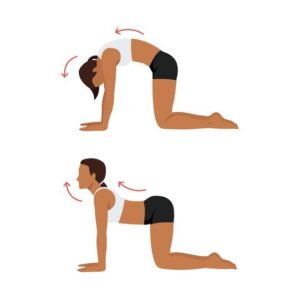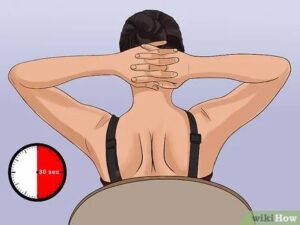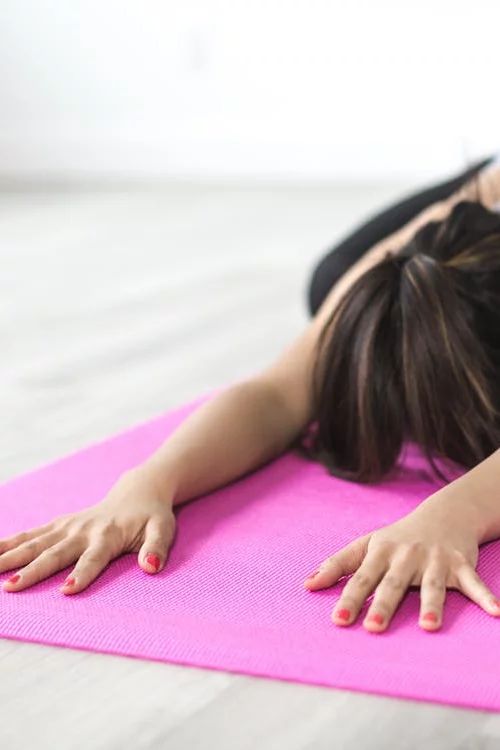14 Stretches to Do Before Bed for Better Sleep – Getting a good night’s sleep is essential for your overall health and well-being. Unfortunately, sometimes counting sheep just isn’t enough to help you drift off into dreamland. If that’s the case, why not try incorporating some simple stretches before bed?
Stretching can be an effective way to help relax tight muscles, improve circulation, increase flexibility, and reduce stress – all of which are key factors for quality sleep. It can also increase the release of endorphins in the body, enabling you to wake up with greater mental clarity.
Integrating stretching into your pre-bedtime routine can help you drift off easier and stay asleep longer. With this in mind, here’s a look at 14 stretching exercises to help you get better sleep every night.
The Best 14 Stretching Exercises That Will Help You Get a Sound Sleep
Stretching before bed can be a great way to relax and prepare for a good night’s sleep. Practices such as yoga, tai chi, or qi gong involve stretching along with focused breathing and mindfulness to achieve calm. Doing these activities or other forms of stretching before bedtime may improve sleep quality by helping your body enter a relaxed state and fall asleep more quickly. Stretching provides a great alternative nighttime activity to scrolling through social media or reading emails on a screen, as studies have shown that practices like yoga and stretching can be incredibly relaxing and meditative, helping to reduce stress.
In addition to the physical benefits of stretching, it can also help you mentally prepare for restful sleep. Taking time to focus on your breath while stretching can help clear your mind of any worries or anxieties that might be keeping you up at night. It is important to find the right type of stretches for you; some people prefer dynamic stretches while others prefer static stretches. Experiment with different types of stretches to find what works best for you.
1. Shoulder Stretch
Stretching the shoulders is an important part of maintaining good posture and preventing back pain. A simple shoulder stretch can be done before bedtime to help relieve tension in the shoulders caused by poor posture. To do a shoulder stretch, raise your shoulders to your ears, hold for three seconds, roll back, and lower. Repeat this 10 times for best results.
Additionally, seated and reclined lower back stretches can be done to further reduce and prevent back pain. For the seated lower back stretch, sit on the floor with legs spread as far apart as is comfortable, rest both hands on top of your right knee, slowly reach your hands toward your right ankle, and hold for 10 seconds. For the reclined lower back stretch, lie on your back on a flat surface and place both hands behind your right knee and bring it to your chest. Hold the stretch for 10 seconds then slowly return to starting position. Repeat with the left knee and repeat 10 times. Stretching regularly can help keep muscles loose and prevent pain.
2. Leg Stretches
Leg stretches are an important part of any fitness routine. Not only do they help to increase flexibility and range of motion, but they can also help to relieve leg cramps and tension. Before bedtime is a great time to perform some simple leg stretches that can help you relax and get a good night’s sleep.
The Standing Quadricep and Thigh Stretch, Hamstring Stretch, Calf stretch, Seated Lower Back Stretch, and Reclined Lower Back Stretch are all great exercises for relieving tension in the legs. To perform the Standing Quadricep and Thigh Stretch, stand on one leg while grasping the other foot and pull back gently toward the buttocks until a stretch is felt in the front of the thigh.
For the Hamstring Stretch, extend one leg forward with the foot flexed while bending the other knee and leaning back slightly while keeping the pelvis forward and body upright. The Calf stretch can be done by standing facing a wall, taking a step forward with one foot, and pressing the heel of the other foot into the floor. Hold for 10 seconds and repeat on the other side.
3. Overhead Stretch
The overhead stretch is a great way to relax and stretch out the muscles in the upper body, shoulders, and arms. To perform this stretch, start by sitting or standing with feet shoulder-width apart and bring both hands over your head interlacing fingers stretching toward the ceiling. Deep breathing is incorporated into the stretch to help relax before bedtime. Seated with either leg crossed or on heels, extend left arm above head and place right arm on the floor. Lean body to the right, keeping left arm above the ear to feel stretch on the left side. This stretches obliques, the spine, and strengthens the core for a stronger spine.
The overhead stretch can be done anytime during the day but it’s especially beneficial when done at night before bedtime as it helps relax tense muscles that have been used throughout the day. It also helps improve posture by strengthening core muscles which can help reduce back pain from sitting in an office chair all day long. Additionally, it increases flexibility in the upper body and arms which can help improve the range of motion.

4. Child’s Pose
Child’s Pose is a gentle and restorative yoga pose that can be done before bed to help reduce stress and tension in the body. It is an excellent way to relax the mind and body before sleep. To do this stretch, start by kneeling on your bed or floor with your knees hip-width apart and feet together behind you. Then, lower your torso over your thighs and relax your forehead on the ground. Hold the stretch for at least 60 seconds while lengthening through your spine and drawing up ribs and shoulders away from your ears.
This pose helps to relieve pain in the shoulders, neck, and back as well as reduce stress levels. It also encourages deep breathing which can help to calm the mind and body. Child’s Pose is a great way to end a yoga practice or just take some time for yourself during a busy day. Taking even just five minutes out of your day to do this pose can make all the difference in how you feel throughout the day.
5. Cat and Cow Pose
Cat and Cow Pose are two poses that help to relieve tension in the neck, shoulders, and back. To practice these poses, begin by kneeling on the floor with hands shoulder-width apart. From here, the transition between arching the back upwards while drawing the stomach in (cat pose) and rolling the shoulders up and back while lowering the stomach (cow pose). This movement helps to stretch out tight muscles in the upper body while also improving posture.
The Cat and Cow Pose can be practiced as part of a yoga sequence or as a stand-alone exercise. It is important to move slowly and mindfully when transitioning between each pose to ensure that you are getting the most benefit from them. Additionally, it is important to listen to your body and stop if you feel any discomfort or pain. With regular practice, these poses can help reduce stress levels while also increasing flexibility in your spine and upper body muscles.

6. Neck Stretches
Neck stretches are an effective way to relieve tension and discomfort during sleep. They can help reduce pain in the neck, head, and shoulders by stretching out tight muscles. The ear-to-shoulder neck stretch involves bringing the ear towards the shoulder and holding for 5-10 seconds. The up-and-down neck stretch involves lowering the chin towards the chest for 15-30 seconds, then raising it towards the ceiling for 5-10 seconds. Side-to-side neck stretch involves turning the head to the right until a stretch is felt, holding for 5-10 seconds, and then returning to the starting position before repeating on the left side.
Both types of neck stretches should be repeated two to four times. It is important to maintain proper posture while doing these stretches in order to maximize their benefits. Neck stretches can be done before bed for maximum benefit as this will help relax tense muscles and prepare them for a restful night’s sleep.
7. Yoga Poses for Relaxation
Yoga is a great way to relax and unwind before bed. It can help reduce stress, improve sleep, and alleviate neck and back pain. Incorporating yoga into your sleep hygiene routine can be beneficial for winding down and stretching before bed. FitOn has an entire tab dedicated to these activities that can help release stiffness and tension from the day, center the body and mind, and prepare for sleep.
These activities are designed to be gentle enough for pre-bed yoga or stretching. They include poses such as Child’s Pose, Cat/Cow Pose, Seated Forward Fold, Reclined Twist, Legs Up The Wall Pose, Corpse Pose (Savasana), Bridge Pose (Setu Bandha Sarvangasana), Supported Fish Pose (Matsyasana), and more. Each pose has its own benefits that can help you relax your body and mind before going to bed. With regular practice of these poses, you will start to feel more relaxed in your body and mind, allowing for a more restful sleep.
8. Leg Stretches
Leg stretches are an important part of pre-bed stretching as they can help reduce stiffness in the legs and improve circulation. The seated hamstring stretch involves sitting on the floor with one leg straight out in front of you and the other bent with the foot flat on the floor. Lean forward from the hips, keeping your back straight, until you feel a stretch in the back of the leg. Hold for 30 seconds before switching legs.
The standing quadriceps stretch involves standing with one foot behind you and bending the knee of the other leg to bring your heel towards your buttock. Reach back and grab the ankle of the bent leg, pulling it closer to your body until you feel a stretch in the front of the thigh. Hold for 30 seconds before switching legs.
The standing calf stretch involves standing with one leg in front of the other and bending the back knee until you feel a stretch in the calf muscle. Hold for 30 seconds before switching legs. The seated ankle rotation involves sitting on the floor with both legs outstretched in front of you. Rotate each ankle clockwise and counterclockwise for 10-15 repetitions.
These stretches can help reduce stiffness in the legs and improve circulation, allowing for a more restful sleep.
9. Glute Stretches
Glute stretches are important for pre-bed stretching as they can help reduce stiffness in the glutes and improve circulation. The seated glute stretch involves sitting on the floor with one leg bent and the other straight out in front of you. Lean forward from the hips, keeping your back straight, until you feel a stretch in the glutes. Hold for 30 seconds before switching legs.
The standing glute stretch involves standing with one leg bent and the other straight out in front of you. Reach back and grab the ankle of the bent leg, pulling it closer to your body until you feel a stretch in the glutes. Hold for 30 seconds before switching legs.
The lying glute stretch involves lying on your back with both knees bent and feet flat on the floor. Cross one leg over the other and pull it towards your chest until you feel a stretch in the glutes. Hold for 30 seconds before switching legs.
These stretches can help reduce stiffness in the glutes and improve circulation, allowing for a more restful sleep.
10. Chest Stretches
Chest stretches are important for pre-bed stretching as they can help reduce stiffness in the chest and improve circulation. The standing chest stretch involves standing with your arms outstretched to the sides and palms facing up. Reach up towards the sky, feeling a stretch in the chest, and hold for 30 seconds.
The seated chest stretch involves sitting on the floor with your legs outstretched in front of you and your arms outstretched to the sides. Reach up towards the sky, feeling a stretch in the chest, and hold for 30 seconds.
The lying chest stretch involves lying on your back with your arms outstretched to the sides and palms facing up. Reach up towards the sky, feeling a stretch in the chest, and hold for 30 seconds.
These stretches can help reduce stiffness in the chest and improve circulation, allowing for a more restful sleep.

11. Bear hug
The bear hug is a great stretch for the upper back, specifically targeting the rhomboids and trapezius muscles. To do this stretch, start by standing tall and crossing your arms, placing your right arm over your left and your left over your right to give yourself a hug. Hold the stretch for 30 seconds before opening your arms wide and repeating with the opposite arm on top. You can deepen the stretch by grasping your shoulders and pulling gently.
Breathing deeply while in this pose will help you get the most out of it, as it allows oxygen to reach all of the affected muscles. It’s important to hold this pose for at least 30 seconds in order to benefit from it fully. Doing so will help strengthen and relax these muscles, improving posture and reducing tension in the neck, shoulders, and upper back. The bear hug is an easy way to incorporate stretching into any routine or lifestyle; try it today!
12. Back Stretches
Back stretches are an important part of maintaining a healthy back and preventing pain. Stretching can help relieve existing back pain as well as prevent it from occurring in the future. Seated lower back stretches, reclined lower back stretches, leg stretches, standing quadricep and thigh stretches, hamstring stretches, and calf stretches are all effective ways to stretch the back muscles.
The seated lower back stretch involves sitting on the floor with legs spread apart and resting hands on top of one knee while reaching hands toward the ankle. The reclined lower back stretch is done by lying on a flat surface and bringing both hands behind one knee to pull it towards the chest. Leg stretches before bedtime can help relieve leg cramps and tension. Standing quadriceps and thigh stretch is performed by standing on one leg while grasping the other foot and pulling it gently towards the buttocks until a stretch is felt in front of the thigh.
Hamstring stretching involves extending one leg forward while bending the other knee and leaning forward until a stretch is felt in the back of the thigh. Calf stretching can be done by standing with feet hip-width apart and pushing one heel into the ground until a stretch is felt in the calf muscle.
These stretches can help improve flexibility, reduce tension, and promote better sleep. Incorporating these stretches into your nightly routine can help you get a better night’s rest.
13. Corpse Pose
The corpse pose is a restorative yoga pose that helps to relax the body and mind. To do this pose, start by lying flat on your back with your arms at your sides and your legs extended out in front of you. Close your eyes and focus on your breathing, allowing yourself to relax into the pose.
Hold this pose for 5-10 minutes, focusing on deep breaths and allowing any tension or stress to melt away. This pose helps to relax the body and mind, preparing you for a good night’s sleep.
14. Seated Spinal Twist
The seated spinal twist is a gentle yoga stretch that helps to release tension in the back and spine. To do this pose, start by sitting on the floor with your legs extended out in front of you. Bend your right knee and cross it over your left leg, placing your right foot flat on the ground outside of your left thigh. Place your left hand behind you and your right hand on your right knee.
Gently twist your torso to the right, keeping your spine straight and your shoulders relaxed. Hold this pose for 30 seconds to 1 minute, then switch sides. This pose helps to release tension in the back and spine, promoting better posture and improved sleep quality.
How many times a week should I do these stretches in order to get the desired results?
The answer to this question depends on your individual needs and goals. Generally speaking, it is recommended to do these stretches at least three times a week in order to get the desired results. Doing them more often can help you achieve even better results. It is important to remember that stretching should be done gently and slowly, with no bouncing or jerking motions. You should also take breaks between each stretch to allow your body to rest and recover.
Do I need any special equipment or props to complete these stretches?
No, you do not need any special equipment or props to complete the 14 stretches before bed for better sleep. All of the stretches can be done with just your body and a comfortable surface to lie on. You may want to use a yoga mat or blanket if you have one available, but it is not necessary. The stretches are designed to be gentle and relaxing, so no extra equipment is needed.
Conclusion
In conclusion, incorporating these 14 stretches into your nightly routine can help you get a better night’s rest. These stretches can help improve flexibility, reduce tension, and promote better sleep. Doing them at least three times a week is recommended in order to get the desired results. No special equipment or props are needed to complete these stretches; all that is required is your body and a comfortable surface.














Leave a Reply